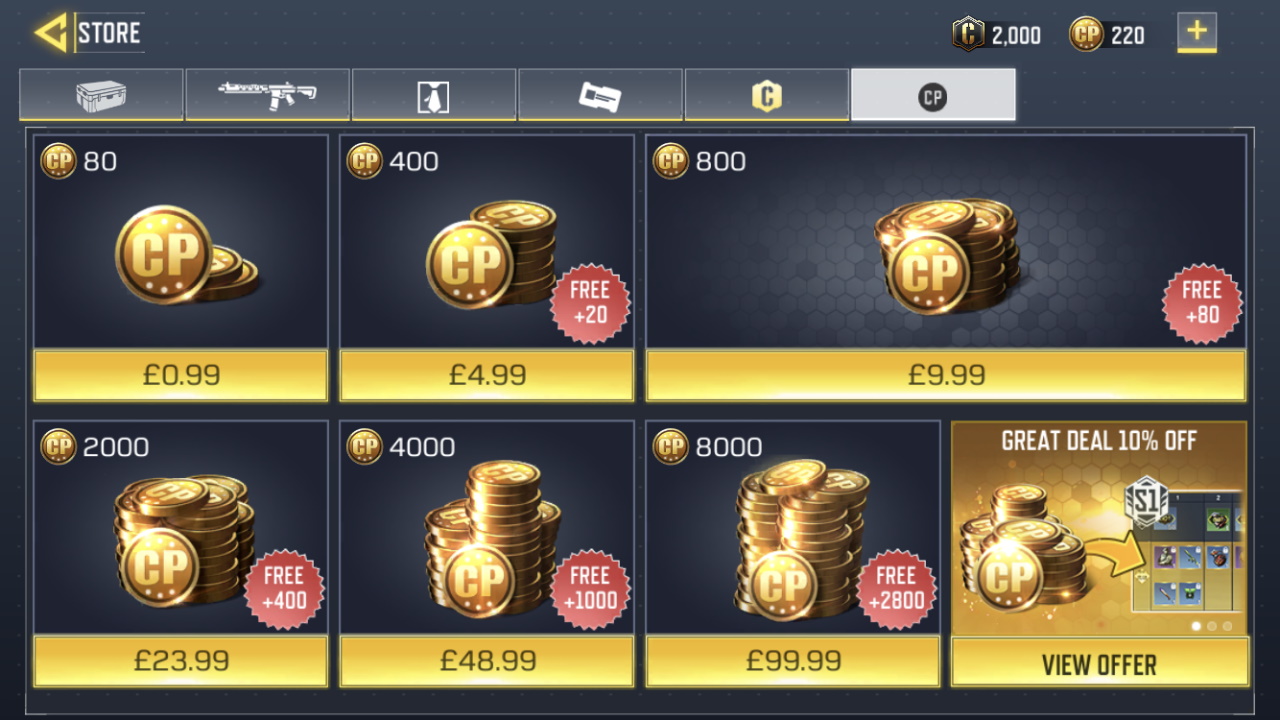Determining ideal pricing for your game can be tricky. The ultimate goal here is to find the pricing points where you can get a lot of sales and a high return.
While the game is still in the development stage, you can do A/B tests until you find the right price. Simply display different price sets to different user groups and compare their conversion rates.
Of course, after establishing a price structure, you have to stay consistent. Players will naturally have negative reactions to conflicting or changing prices.
Another important thing when it comes to pricing is to include a range of various price points. For example, offer 20 coins, 200 coins, 2000 coins, etc. This way, the players can decide what to buy based on their possibilities and value for money.
Written 23/9/2022 by Admin.
Wondering when it’s time to start thinking about your game’s monetization setup? The answer is – as soon as in the development phase. Doing so will save you resources and hassle later on.
After all, many aspects of your game will revolve around the selected IAP strategy. Therefore make sure everything works right, plan ahead, and rely on the industry’s best practices.

Determining ideal pricing for your game can be tricky. The ultimate goal here is to find the pricing points where you can get a lot of sales and a high return.
While the game is still in the development stage, you can do A/B tests until you find the right price. Simply display different price sets to different user groups and compare their conversion rates.
Of course, after establishing a price structure, you have to stay consistent. Players will naturally have negative reactions to conflicting or changing prices.
Another important thing when it comes to pricing is to include a range of various price points. For example, offer 20 coins, 200 coins, 2000 coins, etc. This way, the players can decide what to buy based on their possibilities and value for money.
Now let’s talk about how high you should set your prices.
According to DeltaDNA, the minimum price point should be above $2.
This may come as surprising since setting lower prices can seem like a good idea.
However, it isn’t.
Data shows anything below $2 typically has a negative effect on the game’s ARPDAU. When it comes to more expensive items, they should always come with better value for money. For instance, buying the above-mentioned 2000 coins should pay off most.
However, watch out for too high prices for certain items or bundles. Spending over $50 on an individual purchase is rare, even with the biggest spenders.
When deciding which items to integrate into your game, get some inspiration from the top-performing games in your genre. Typically, there are mechanics that work better for certain genres. For example, loot boxes can be great for RPG or strategy games, while piggy banks are a better choice in casino and puzzle games.
Your game’s IAPs should simply be worth buying and the player should clearly feel their benefits. For example, power-ups and upgrades are universal boosters that can be applied to almost every game.
Make sure to remember that most of the players won’t pay. For this reason, advancing in the game has to be possible without purchasing anything as well. This is very important for user retention and user experience.
Generally, when integrating IAPs, the key thing is to do it seamlessly and strategically.
Timing is a very important factor for successful in-app purchases.
It all starts with the onboarding process. This is where you should first introduce the users with in-app purchases. For starters, you can simply show them how the store works in the form of a game tutorial.
At this point, don’t push to sell. Before you introduce the players to offers, they should feel positive about the game itself.
The first offer should come when the players feel like they need it. For example, the player failed at passing a level a few times in a row. Luckily, you’re here to offer assistance. Also, make sure the first offer comes with good value for money. For example, you can include a starter bundle.
When trying to persuade the players into making in-app purchases, make it about them. Sending out identical offers to all the players is a big no-no. The least you can do is segmenting your players into different groups based on their user behavior, spending habits, etc.
Ideally, the offers should be completely personalized. For example, you can add the user’s name in the offer text, and even in the item name.
Besides that, always follow the users’ journeys and tailor the messages and offers accordingly.
Let’s say you want to offer your players premium upgrades. This can be a great strategy, but definitely not for new players. Since they’ve just started playing they simply won’t see the benefit of paying just yet. On the other hand, this might work great with already engaged players. This is why you have to separate them into groups.
If you have a stock of items that can be bundled and sold as a package – utilize it. Gather different items together into bundles and sell them at a cheaper price than they would pay for them individually.
Talking about value for money, we have to mention discounts. Including any kind of special offers will make in-app purchases more appealing.
What is even better than discounts? Time-sensitive discounts. According to Clevertap, implementing this feature can outperform other types of promotions by 8%. They can create a sense of urgency and encourage players to make a purchase.

Finding users who spend a lot of money on in-app purchases is hard. This tiny group of users is called mobile game whales. Catching them is of utmost importance for IAP driven games as they make as much as 90% of total mobile gaming sales.
In most cases, users who spend $100 or more during their lifetime are considered whales. However, this almost never happens in the form of a one-time purchase. They spend an average of $20 a purchase (DeltaDNA).
What this means for you is you need to provide them with an encouraging and rewarding purchasing experience.
With more and more mobile games to choose from, catching them is becoming more of a challenge.
If you already have an existing user base, you should dive into analysis to find your whales. Detect your existing spenders and learn all about them:
Doing this will help you both optimize both your gameplay and IAP to drive in-app actions.
Attracting whales is also linked to your game’s user acquisition campaigns. Both Google and Facebook offer you the possibility to optimize campaigns for in-app actions such as in-app purchases.
Targeting users that are likely to spend on-in app purchases instead of aiming for the number of installs might result in catching more big spenders.
Talking about best practices for engaging users, it is always recommended to use push notifications, in-app messages, and pop-ups. The key to all of these alerts is making them relevant, timely, and valuable to the user.
We’ve seen this done wrong so many times.
For example, something we’ve seen in games is related to so-called “one-time offers”. These “one-time offers” often appear every time the game is launched. No need for explaining this one.
There is nothing wrong with contacting the players, however overdoing it will have the complete opposite effect. Too frequent and fake offers are a sure way to annoy the users and make them hit the uninstall button.
Different game genres require different IAP setups. Therefore, wisely utilizing and combining these tips will result in promising achievements and keep your game stay profitable.
If you feel like you need help finding the perfect monetization strategy for your game, feel free to contact us!